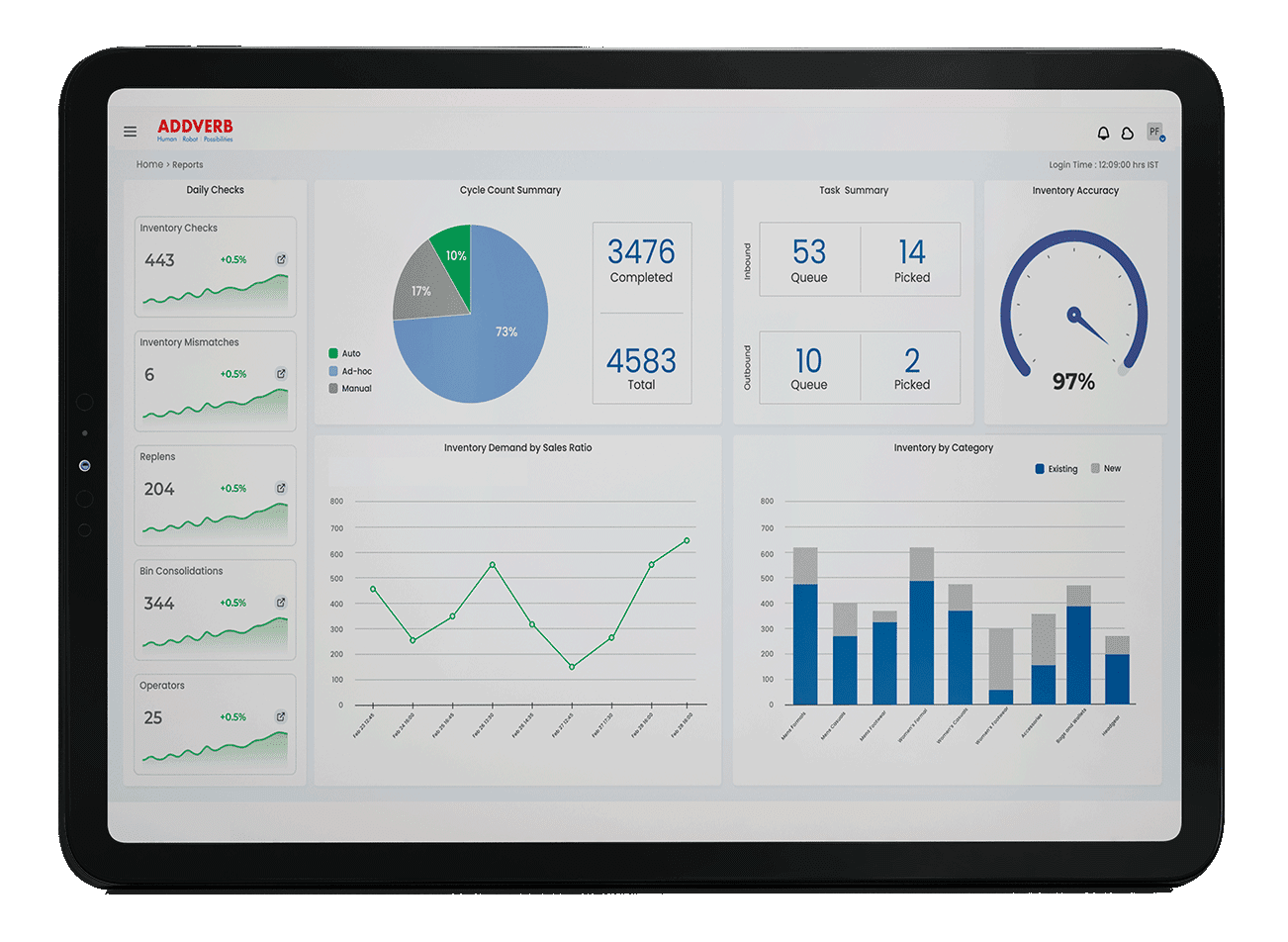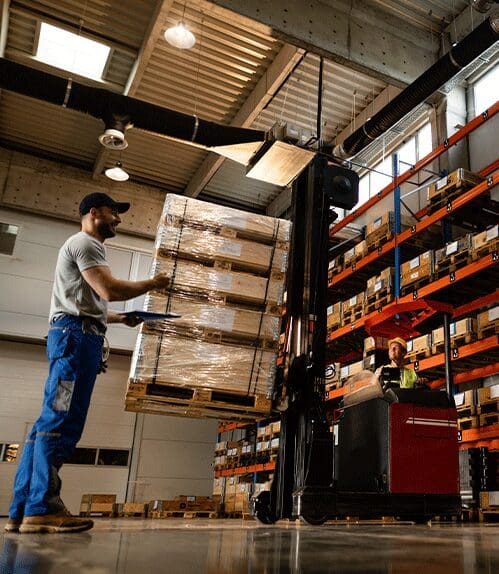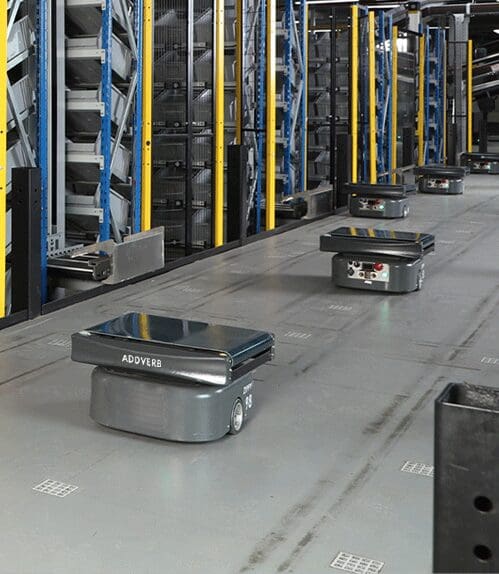Table of Contents
Understanding Wave Picking Strategies and Techniques
Any supply chain’s ability to operate efficiently depends on the effectiveness of warehouse operations. Wave picking, often referred to as cluster picking, has become a preferred technique for streamlining order fulfilment procedures. This in-depth tutorial will uncover the world of wave picking.
We will explore its definition, core concepts, different types, best practices, advantages, limitations, its integration with warehouse management systems (WMS), optimisation tips, common challenges, and potential solutions.
What is Wave Picking (Cluster Picking)?
It is an order-picking technique used in warehouses to speed up fulfilment and boost productivity. It entails segmenting the order selection procedure into various waves or groups, with each wave concentrating on a certain group of items. This strategy is especially beneficial for businesses that process several orders with various item sizes, amounts, and locations.
The picker picks all the goods for the orders in the wave at once rather than collecting each order’s items separately, optimising the path and cutting down on trip time inside the warehouse. This approach makes the overall process faster and more efficient by drastically reducing the number of visits a picker needs to make to gather goods.
How Does Wave Picking Work?
The following steps are involved in the picking method:
- Order batching: Based on factors including item location, delivery deadlines, and order priority, customer orders are divided into waves. Combining related goods or neighbouring orders does this, cutting down on the picker’s journey distance.
- Order quantities: Each wave is given a pick list with the necessary goods and quantities for all of the orders in that wave.
- Picker technology: Pickers employ handheld or wearable technologies to roam around the warehouse and gather products for their designated wave during execution.
- Order preparation: Following wave goods are sorted and wrapped by individual orders for shipping or additional processing.
Types of Wave Picking
There are several picking strategies, each with distinctive advantages and applicability for particular warehouse environments:
- Warehouse zones are divided into waves for zone wave picking, which reduces picking distance by having pickers only operate in their assigned zones.
- Batch wave picking is a method of grouping orders based on item characteristics, pickers can manage several orders at once.
- Using waves made up of batches of orders from several zones, zone-batch wave picking combines zone and batch wave picking.
- Orders travel across workstations in waves using wave picking with pick-and-pass, where pickers at each station choose items for all orders before transferring the wave to the following workstation.
Best Practices for Effective Wave Picking
It is crucial to adhere to a few excellent practices during wave selection to maximise your success:
- Order segmentation: To produce effective waves, analyse order properties and intelligently group them. This could entail taking into account elements like order size, delivery windows, or priority levels.
- Regular wave updates: As orders come in or alter, update and improve the waves frequently to account for fresh data.
- Product placement: Optimise your warehouse’s layout by strategically placing products to cut down on pickers’ journey time. Items that are picked up frequently ought to be put closer to packing areas.
- Integrating WMS efficiently: Use a strong Warehouse Management System (WMS) in conjunction with your wave picking approach to accelerate order processing and inventory control.
- Employee development: To increase pickers’ productivity, thoroughly instruct them in the wave picking procedure and the usage of technology.
ALSO READ: Mastering Warehouse Slotting: Key Insights for Optimal Efficiency
Benefits of Wave Picking
Wave picking method has several benefits that boost warehouse productivity and order fulfilment, including:
Enhanced efficiency: Wave picking decreases travel time, which speeds up order fulfilment by grouping several orders into waves and optimises picker routes.
Error reduction: Because pickers handle items for several orders at once, there is less potential for confusion, which lowers the possibility of order errors.
Higher productivity: Pickers can process more orders in less time with wave picking, which boosts the warehouse’s total productivity.
Better inventory control: Using wave picking in conjunction with a WMS enables real-time inventory tracking and better stock level control.
Optimised labour utilisation: As pickers spend less time walking and more time choosing things, warehouse labour is used more effectively.
Unlock the future of orderfulfillment fulfillment with Addverb’s cutting-edge picking solutions!
Challenges in Wave Picking
Although it has several benefits, it is important to take into account its limitations:
- Potential delay in certain orders: As opposed to conventional order picking techniques, certain orders that are part of a later wave may experience a delay in fulfilment.
- Complex planning and execution: Wave selecting implementation calls for meticulous planning and coordination. Effective wave synchronisation may be difficult, adding to the complexity.
- Demand variability: When there is a consistent and predictable flow of orders, wave picking performs best. Demand fluctuations that occur suddenly can prevent waves from getting up.
- Limited applicability to some Industries: Not all industries or warehouse layouts would be ideal. Other order selecting techniques might be more advantageous for some businesses.
Integration Of Wave Picking with Warehouse Management Systems (WMS)

Integrating it with a Warehouse Management System (WMS) is a critical step in achieving optimal results. With its cutting-edge WMS solution, Optimus, Addverb is at the forefront of this innovation. The core of warehouse operations is this flexible warehouse management system, which seamlessly integrates inbound and outbound logistics, manages inventory, allocates resources, and intelligently balances workload.
By making judgments in real-time, Optimus goes above and beyond the capabilities of conventional WMS to ensure efficient and effective warehouse operations. Using Optimus for wave picking unlocks a wealth of cutting-edge capabilities that improve productivity and accuracy in the warehouse:
- Real-time updates: Real-time decision-making is made possible through Optimus’s seamless integration with any upstream ERP or order management systems by offering quick updates on order and inventory status.
- Integrated inventory management: From the time inventory enters the warehouse until it is prepared to leave, Optimus is in charge of keeping track of it. With such thorough management, the system guarantees proper inventory levels, limiting the requirement for safety stock and stock-out problems.
- Seamless wave picking: Optimus makes the wave picking in warehouse procedure as efficient and productive as possible. It minimises travel time by intelligently arranging orders into waves, accelerating and increasing the output of the entire process.
- Real-time reporting and analytics: Managers and supervisors of warehouses receive knowledge of important indicators, enabling them to make data-driven choices for ongoing improvement.
Tips to Optimise a Wave Picking Strategy
Consider using the following advice to further improve your wave selection strategy:
- Data analysis: Constantly look for patterns and trends in the historical order data to assist you in creating waves more effectively.
- Dynamic boost: Implement a system that enables dynamic wave production to adjust to immediate changes in order and increase productivity.
- Employee cross-training: Give your warehouse personnel the skills they need to manage a variety of duties, giving them more flexibility during busy times.
- Performance measurements: To find opportunities for improvement, track and monitor important performance metrics including pick rates, accuracy, and order fulfilment times.
Want to dive deeper into topics like this? Check out our other blogs for more insights and updates!
Challenges and Solutions in Wave Picking
While there are many benefits to wave picking in a warehouse, there are also some drawbacks. Following are some typical issues and potential solutions:
- Wave synchronisation: Synchronising waves with changes in demand can be challenging. To maximise wave generation, consider utilising sophisticated planning algorithms for predictive analytics.
- Seasonal demand: During busy times, order volumes in warehouse operations may increase. To effectively handle an increase in demand, consider hiring seasonal personnel or looking into cross-training.
- Dependence on technology: Having a high reliance on technology can have hazards, such as system failures. Create backup plans and manual procedures to deal with such circumstances.
- Warehouse layout restrictions: Wave picking efficiency may be affected by warehouse layouts with restricted space or ad hoc designs. Rearrange the warehouse’s layout to cut down on journey time.
Conclusion
A useful order picking technique that improves order fulfilment procedures and maximises warehouse efficiency is wave picking, also known as cluster picking. Wave picking decreases order errors while minimising travel time by organising orders into waves and strategically designing picker routes. Wave picking is even more successful when combined with a warehouse management system (WMS).
However, requires careful planning and execution on the part of warehouses, taking into account variables like demand volatility, warehouse structure, and technology dependencies. Warehouses can fully utilise the advantages and contribute to a streamlined and effective supply chain by adhering to best practices, optimising wave production, and addressing difficulties. Including wave picking in your warehouse strategy can help your company remain competitive in the quick-paced industry of today.
To boost customer happiness and commercial success, take action right away and investigate how wave picking can revolutionise your warehouse operations.
Wave Picking FAQs
Does wave picking work in all kinds of warehouses?
A warehouse with a high volume of orders for a wide range of items will benefit most from wave picking. However, its relevance may change depending on the size, design, and kind of products being handled in the warehouse.
Is it possible to combine wave picking with other order selection techniques?
To maximise order fulfilment, some warehouses adopt a hybrid approach that combines wave picking with other techniques like batch picking or zone picking.
Why is it necessary to update waves so frequently?
The quantity of incoming orders and the stability of demand both affect how frequently waves are updated. More frequent updates could be required in dynamic contexts to maintain effectiveness.
Founded in 2016, Addverb offers complete robotics solutions for warehouse and industrial automation, with a strong global presence through its subsidiaries worldwide. The company provides a range of in-house automation products, including Autonomous Mobile Robots, ASRS, and sorting technologies. It serves over 350+ clients, including well-known companies such as Coca-Cola, Amazon, and DHL.






